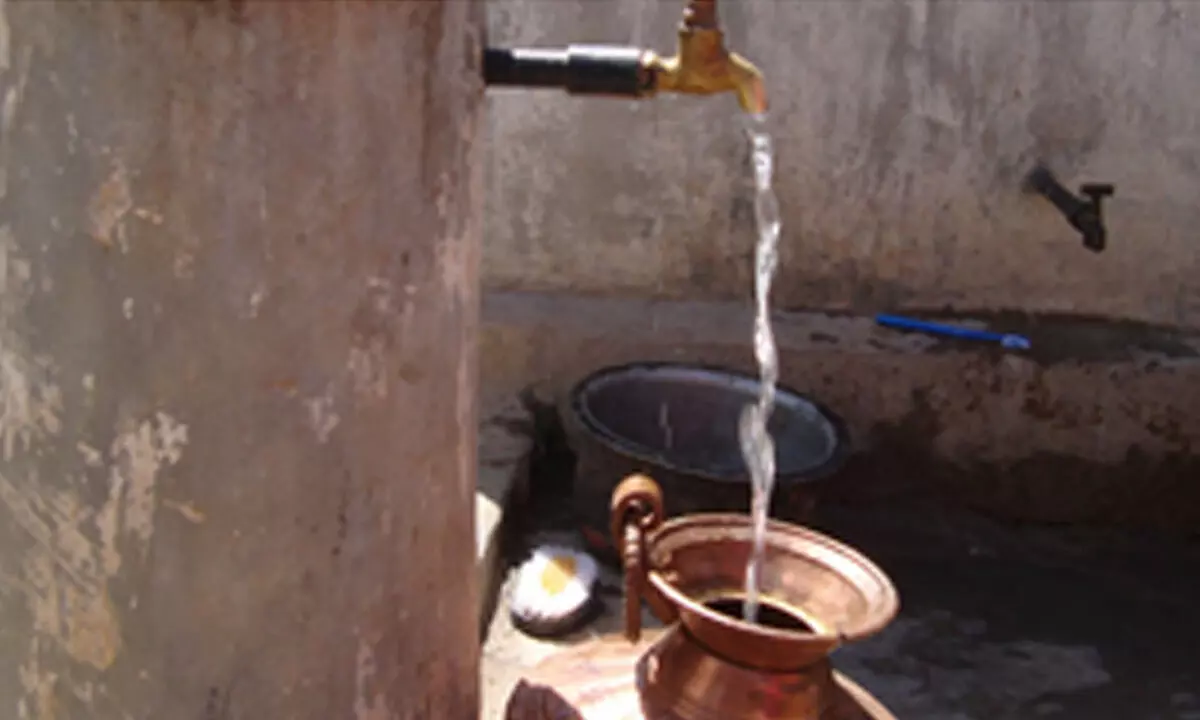Shallow groundwater in Punjab's Malwa unfit for drinking: Central University
Share :

The people in Punjab, particularly in the Malwa region, should avoid drinking groundwater with high total dissolved solids (TDS) and water from shallow wells (less than 60 metre deep) as these water sources have been found to contain high levels of toxic contaminants, especially uranium and fluoride, the Central University of Punjab said in a study.
Chandigarh: The people in Punjab, particularly in the Malwa region, should avoid drinking groundwater with high total dissolved solids (TDS) and water from shallow wells (less than 60 metre deep) as these water sources have been found to contain high levels of toxic contaminants, especially uranium and fluoride, the Central University of Punjab said in a study.
Both adults and children face significant health risks from consuming contaminated groundwater.
This warning comes from the study conducted by a research team comprising Prafulla Kumar Sahoo, Anjali Kerketta, and Harmanpreet Singh Kapoor.
The research, published recently in the reputed international journal Groundwater for Sustainable Development by Elsevier B.V. Netherlands, confirms the dangerous levels of uranium and fluoride in the groundwater of the Malwa region.
It highlights both natural and anthropogenic factors responsible for this co-contamination.
The study reveals that among the studied districts, groundwater in the four worst-affected districts -- Fazilka, Sri Muktsar Sahib, Bathinda, and Barnala -- is extremely unsafe for human consumption.
Shallow wells in these areas are unfit for drinking and irrigation due to high levels of fluoride, uranium, and TDS.
Fluoride concentrations exceeding the safe limit of 1.5 mg/L (WHO safe limit) can cause dental and skeletal fluorosis, while uranium levels above 30 µg/L (WHO safe limit) pose risks of chronic organ damage and nephrotoxicity.
The research also reported a linkage between high uranium and fluoride concentrations and increased health risks among the people in the region.
The researchers identified long-term interactions between groundwater and the environment, influenced by human activities such as agrochemical levels and hydro-chemical factors like groundwater-surface water mixing, as contributing factors for mobilisation of these contaminants.
High TDS levels, particularly in shallow wells in southwestern districts due to salinisation, rock-water interactions, salt-mineral dissolution, and agrochemical inputs, exacerbate the problem.
Additionally, meteorological factors like low rainfall, high evapotranspiration, and arid conditions, significantly influence TDS level and the co-occurrence of fluoride and uranium.
Using the United States Environmental Protection Agency (USEPA) model, the study assessed health risks from fluoride and uranium.
The results indicate that both children and adults face high health hazard risks from these contaminants.
The research found signs of various health problems in the groundwater samples, of which uranium in groundwater posed a health risk to children in 66 per cent of the samples and to adults in 44 per cent of the samples.
While fluoride in groundwater posed a health risk to children in 29 per cent of the samples and to adults in 23 per cent of the samples.
These stress upon the urgent need to enhance groundwater monitoring and raise public awareness about the dangers of contaminated groundwater.
Prafulla Kumar Sahoo, the lead researcher, said controlling the release of uranium and fluoride at their sources is difficult due to their geogenic origin.
Therefore, contaminated water must be filtered and treated before consumption.
He advises using groundwater from deeper wells (more than 60 metre) for drinking after purification, as shallow wells are comparatively more unsafe.
He professes installing community-level reverse osmosis (RO) plants, mixing groundwater with canal water in community water storage tanks, and installing RO-based water purifiers at homes to mitigate harmful effects.
Raghavendra P. Tiwari, Vice-Chancellor, Central University of Punjab, stressed the urgent need for immediate action to address the public health crisis revealed by the study.
He advocated for innovating low-cost, advanced, and efficient water treatment technologies involving adsorption and nanotechnology.
He called for enhanced groundwater monitoring, increased public awareness, and collaborative efforts from government agencies, industry, researchers, and local communities to develop and enforce effective water management and remediation strategies.
He emphasised that the goal is to address current contamination and implement sustainable practices to prevent future complications.
